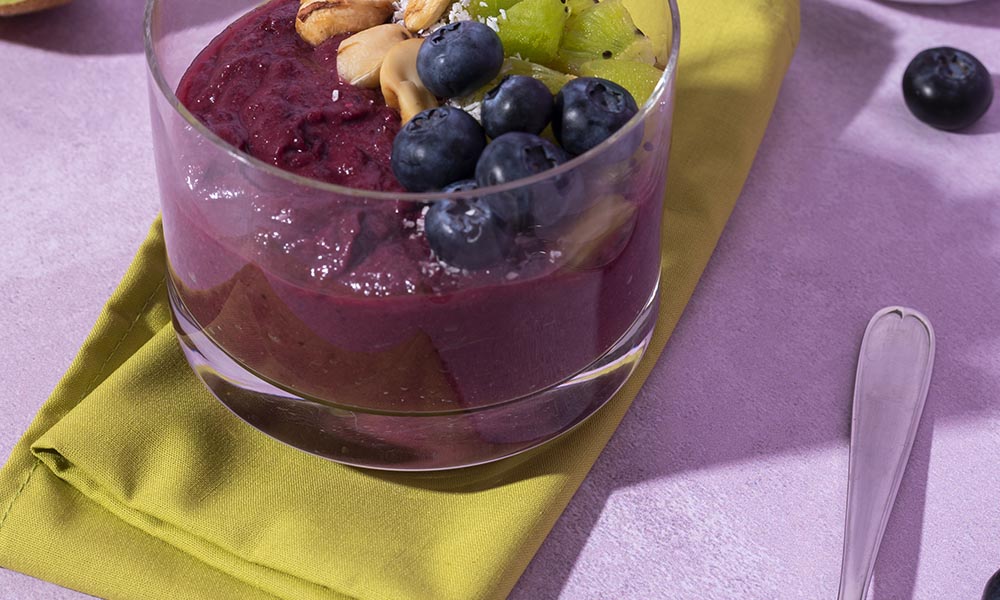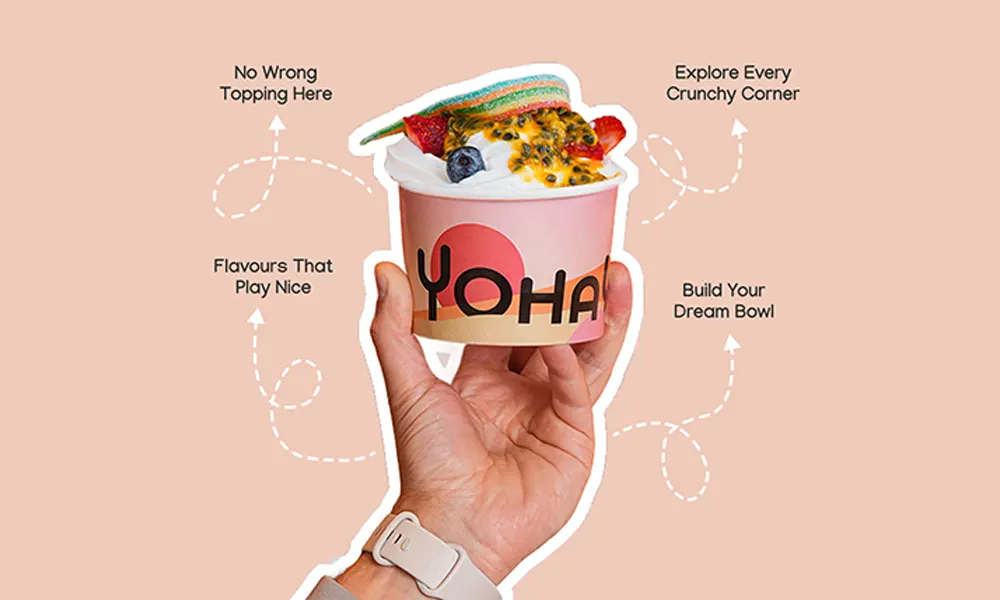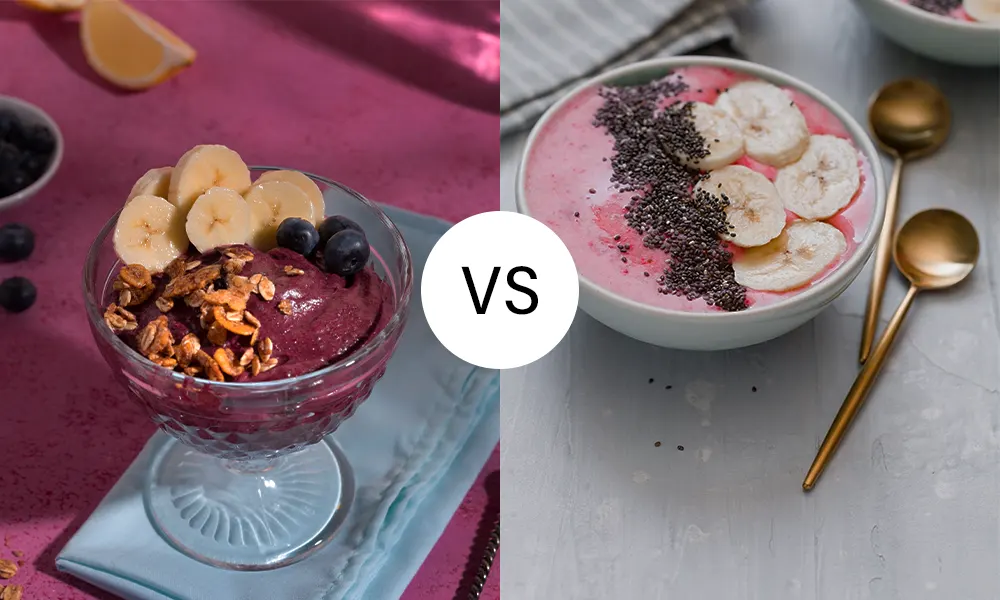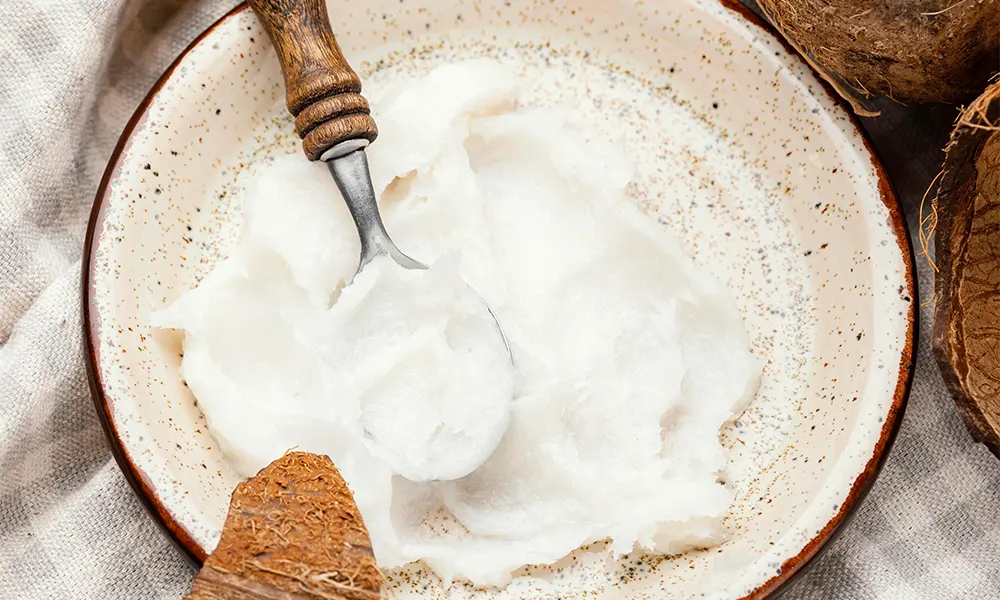Acai is a name that’s become synonymous with health trends and vibrant smoothie bowls. You’ve seen it everywhere, but the curiosity lingers: what does acai taste like? Despite its global popularity, its flavour remains elusive and mysterious. Unlike other berries, acai has a unique taste that defies traditional descriptions of sweetness or tartness. In this blog, we’ll explore its flavour profile in depth, compare it to familiar berries, and help you appreciate why acai has captured the imagination of foodies and health enthusiasts alike.
What Does Acai Taste Like? A Deep Dive into the Flavour Profile
The taste of acai is unlike anything you’ve encountered. Its core flavour is earthy, with subtle chocolatey notes and a faint tartness. Unlike strawberries or raspberries, acai isn’t bursting with sweetness. Instead, it offers a subdued, mature flavour that is often described as “a mix of unsweetened chocolate and berries.”
Fresh acai pulp has an intense earthy taste with a hint of bitterness. However, when blended into smoothie bowls or processed into powders, its flavour softens, and the natural sweetness comes through more prominently. So, what does acai taste like? Think of a sophisticated blend of earthy and fruity notes, with a creamy texture that elevates its appeal.
Comparing Acai to Other Popular Berries
To truly understand what does acai taste like, comparing it to other well-loved berries offers valuable context.
Acai vs. Blueberries
Blueberries are celebrated for their sweet, juicy burst and mild tartness. In comparison, acai is less sweet and lacks that juicy freshness. While blueberries evoke a bright, summery vibe, acai has a more grounded, earthy flavour. What does acai taste like next to blueberries? Picture a darker, more chocolatey version of this familiar berry.
Acai vs. Raspberries
Raspberries deliver an intense tart punch with a delicate sweetness. Acai, on the other hand, is far subtler. What does acai taste like next to raspberries? It lacks their vibrant tang, offering instead a deeper, earthier flavour profile that’s more mellow.
Acai vs. Blackberries
Blackberries have a rich, complex taste with noticeable tartness and astringency. Acai shares a similar depth but lacks the sharp astringency, making it smoother and creamier. What does acai taste like compared to blackberries? Acai is less tangy and feels more refined, with chocolate undertones that set it apart.
Acai vs. Strawberries
Strawberries are the epitome of juicy sweetness, with an instantly recognisable flavour. In contrast, acai is earthier and less sugary. What does acai taste like compared to strawberries? The two couldn’t be more different. Acai is subdued and rich, whereas strawberries are vibrant and sweet.
What Influences Acai’s Taste?
Acai’s flavour isn’t fixed; it varies depending on its form and preparation.
Fresh Acai
In its raw form, acai has a bold, earthy taste with a slightly bitter aftertaste. Fresh acai is rare outside of its native regions, so most people encounter it in processed forms.
Freeze-Dried Acai Powder
Acai powder has a concentrated flavour. The earthiness is more pronounced, and the subtle chocolatey notes shine through. It’s perfect for blending into smoothies or sprinkling on desserts.
Acai Smoothie Bowls
Acai bowls typically combine acai puree with sweet fruits like bananas or mangoes. This mixture enhances the natural sweetness of acai and masks its bitterness. What does acai taste like in a smoothie bowl? It becomes a harmonious blend of creamy, fruity, and earthy flavours.
The Texture of Acai: Another Element of the Experience
The texture of acai plays a crucial role in the overall eating experience. Fresh acai has a creamy, almost pudding-like consistency. When used in frozen purees or powders, it transforms into a silky, slightly icy texture that makes smoothie bowls so appealing.
While the taste often takes centre stage, the texture contributes to the unique appeal of acai-based dishes. For those unfamiliar with the slightly gritty feel of freeze-dried acai powder, this texture may be an acquired taste.
Acai’s Versatility in Culinary Creations
Acai’s subtle and adaptable flavour profile makes it a versatile ingredient. From smoothie bowls to desserts, it pairs well with both sweet and savoury elements. Common pairings include:
- Bananas and Mangos: Enhance sweetness and balance the earthiness.
- Coconut: Complements the creaminess and adds a tropical flair.
- Dark Chocolate: Amplifies the chocolatey undertones of acai.
If you’re trying acai for the first time, starting with a classic smoothie bowl or blended smoothie is the best way to appreciate its taste without being overwhelmed by its earthiness.
What Does Acai Taste Like? The Verdict
So, what does acai taste like? It’s a harmonious mix of earthy, slightly chocolatey, and mildly tart notes, with a creamy texture that sets it apart from other berries. While it doesn’t have the immediate sweetness of strawberries or the juiciness of blueberries, its unique flavour makes it a standout ingredient in smoothies, bowls, and desserts.
Whether you’re a health enthusiast or a foodie, acai offers an exciting flavour journey worth exploring.
Final Thoughts
The best way to truly understand what does acai taste like is to try it for yourself. Its distinctive flavour may take some getting used to, but once you embrace its earthy, chocolatey notes, you’ll see why it’s celebrated worldwide.
Ready to dive into the world of acai? Explore recipes, experiment with pairings, and find your perfect way to enjoy this superfood.
Looking to add the magic of acai to your life? Yo Hayo brings you premium acai products to elevate your culinary creations. From powders to purees, we’ve got everything you need to start your acai journey.
FAQs
-
Is acai naturally sweet or bitter?
Acai has a subtle natural sweetness balanced by earthy and slightly tart undertones. Unlike berries like strawberries or blueberries, acai isn’t intensely sweet. Its unique flavour profile includes a hint of dark chocolate, which adds depth and complexity. The sweetness level often depends on how acai is prepared: smoothies or bowls blended with fruits like bananas or mangoes tend to amplify its sweetness. Raw or unsweetened acai can taste less sweet and more earthy, appealing to those who enjoy its natural, understated flavour.
-
Can acai be eaten raw?
Acai is rarely eaten raw due to its short shelf life and perishable nature. The berries are typically processed into a pulp, powder, or frozen puree to preserve their nutrients and flavour. Raw acai can have a gritty texture and a pronounced earthy taste. Most people prefer to enjoy acai in smoothies, bowls, or as part of recipes where it’s blended with other ingredients. This preparation enhances its flavour, making it more palatable and enjoyable while maintaining its superfood benefits.
-
How does the texture of acai affect its taste?
The texture of acai plays a key role in the overall eating experience. Fresh acai pulp is creamy, almost pudding-like, which complements its subtle earthy and slightly tart taste. In frozen or blended forms, such as smoothie bowls, the texture becomes icier and smoother. However, freeze-dried acai powder can have a more concentrated flavour but a slightly gritty feel. The texture often varies depending on how it’s prepared, but it always enhances the unique flavour profile of the berry.
-
What does acai taste like when mixed with other fruits?
When blended with other fruits, acai takes on a sweeter and more vibrant profile. Fruits like bananas, mangoes, and strawberries complement acai’s earthy and slightly chocolatey flavour, adding a natural sweetness that balances its tartness. Citrus fruits like oranges can highlight its tangy notes, while creamy ingredients like coconut or almond milk enhance its smooth texture. This versatility makes acai a popular choice for smoothies and bowls, allowing its unique taste to blend harmoniously with a variety of flavours.
-
Is acai suitable for all diets?
Acai is a versatile superfood suitable for most diets, including vegan, gluten-free, and dairy-free options. It’s naturally low in sugar and rich in antioxidants, fibre, and healthy fats, making it a great addition to a balanced diet. However, some store-bought acai products, like smoothie packs or bowls, may contain added sugars or other ingredients. If you’re following a specific dietary plan, it’s best to check the label to ensure the product aligns with your nutritional preferences.





